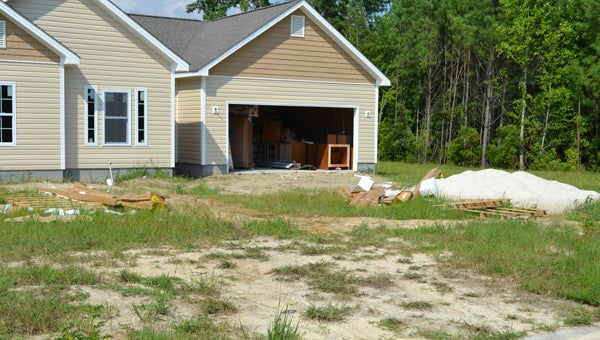Grow or die
Published 6:49 pm Thursday, April 2, 2015

FILE PHOTO | DAILY NEWS
TARGETS: New residential developments, such as Keys Landing in Washington, have long been potential targets for cities and towns when it comes to annexation, one way for a city or town to increase its population and tax base.
Bobby Roberson, a member of Washington’s City Council, believes the city’s reluctance to annex adjacent areas is a factor in Washington’s population not growing.
Yes, many people who live outside the city limits in areas that could be involuntarily annexed consider annexation something akin to the Black Plague. It’s understandable they don’t want to pay city taxes in addition to county taxes if their properties are annexed into the city. Many of those people wanted and were granted (by the Legislature) the right to vote on the issue if and when the city considers involuntary annexation. Want to guess how such a vote likely would turn out?
A movement to make it more difficult for cities and town to annex land gained momentum about six or seven years ago.
It’s just as understandable that Washington could want to annex an area so it has more revenue to pay for the services it provides to existing city residents and people who live outside the city but use services paid for by city taxpayers.
In recent years, involuntary annexation would have helped grow the city, Roberson said.
“The extraterritorial jurisdiction, our service area, is close to 15,000 to 20,000, but our population is only around 10,000,” he said. “Here’s what that is reflected in, and I have looked at it for this year. I have looked at the services. Let’s talk about the senior center. Sixty percent of the users of the senior center are outside the corporate limits of the city. If you look at our library services, 61 percent is outside the corporate limits of the city. I’m not saying we shouldn’t provide those services, but somewhere along the line this is an equity issue.”
Roberson has a point.
By increasing the city’s population past the 10,000 person mark, city officials have said, the city becomes eligible for more grants and revenue opportunities not available to municipalities with populations less than 10,000 people. That eases the financial burden on city taxpayers.
Annexation reform is on the books. It’s difficult, but not impossible, for a city or town to accomplish involuntary annexation. The recent annexation reforms closed a wide-open door that cities and towns had in regard to annexation. Perhaps that door should have been closed somewhat by those reforms.
Involuntary annexation, as difficult as it’s been made to accomplish, should remain an option for cities and towns so their growth is not stymied. In some cases, it may be the only option for a city or town to grow and thrive.




